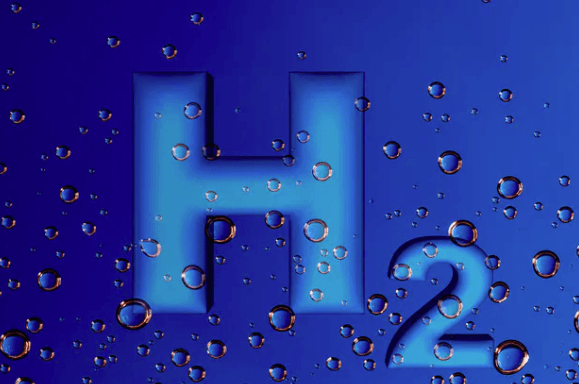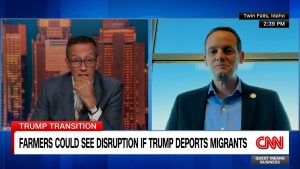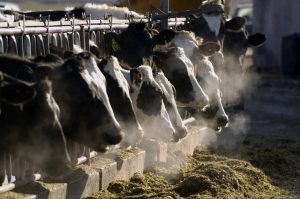And why should it not be? The recent report, Climate Change 2021: The physical science basis, published by Intergovernmental Panel on Climate Change (IPCC) clearly indicates that the global surface temperature will continue to increase until 2050 in all emissions scenario considered. It means all the ongoing measures and even commitments of Conference of the Parties (COP26), if implemented will not halt the increase in global warming till mid of this century. To understand it in simple terms just look around and we can see the effects of climate change in terms of untimely rainfalls, extreme heat waves, flash floods and dwindling crop yields. This will get multiplied manifold in coming years and obviously developing and poor countries will be the one hit hard.
Experts say South Asia is most vulnerable to climate change effects and India ranks seventh on the list of most affected countries (Germanwatch 2021). India’s offer of achieving net zero emissions by 2070 at COP26 is well thought of and based on the developmental imperatives of the country. If we look at the sectorial breakup of national GHG emissions, energy sector (˜68%) leads the lot followed by agriculture (˜19%) and rest from industrial processes, land use and waste management. Within agriculture almost 55% emissions are contributed by livestock management which includes enteric fermentation, manure emissions etc. It doesn’t mean that onus of achieving carbon neutrality is on dairy farmers of the country since per capita carbon emissions of dairying (0.32 Kg) in India is well below the world average (0.40 Kg). However, livestock rearing provides unique opportunity to ponder upon.
Total 62 million rural households are involved in dairying, owning 303 million bovines and making India largest milk producer of the world. Rough estimates suggest that this bovine population produces 1,105 million tonne of dung annually. Now this dung is traditionally used as fertilizer in raw form or after composting it. Dung is stored in open pits as piles in villages which emits greenhouse gases mainly the methane. This methane can be captured using anaerobic digesters popularly known as Gobargas/Biogas plants. Interestingly, even if 60% of the entire dung is recovered and used to produce biogas it can suffice the cooking fuel requirement of all rural households in the country. That is directly avoiding the emission of methane from dung to atmosphere.
There is nothing new in suggesting use of dung for biogas production which is being propagated since last four decades. Government and various organizations are trying to propagate the sustainable use of biogas technology across the country. There are two modes of using biogas, first is household level small capacity biogas plants and second is to install industrial scale high capacity plants. In first case biogas is directly used as cooking fuel and in second scenario biogas is further purified into natural gas known as Bio-CNG used for automobiles. In both the cases apart from gas there is another output called bio-slurry or digestate. It is full of bio-available nutrients and soil beneficial microbes making it perfect organic fertilizer in agriculture.
To achieve its set target of reducing fossil fuel import by 10% from 2015 to 2022, government of India launched various strategic initiatives including SATAT (Sustainable Alternative towards Affordable Transportation) in the year 2018. This scheme encourages entrepreneurs to establish Bio-CNG plants and produce the gas from any organic waste streams available in the locality. Bio-CNG is sold to oil PSUs at pre-determined rates (Rs.46/kg) which will be revised in 2024 and this forward linkage is assured for 10 years. Till date 15 large scale BIO-CNG plants are installed and more than 2000 plants are on their way.
Even after this kind of upfront commercial agreement these plants will not be economically viable through sale of Bio-CNG only. It is assumed that the digestate from these plants will fetch adequate price as fertiliser and add to income source. Revenue analysis of these plants indicates sale of Bio-CNG will provide only 30-40% revenue while rest shall come from digestate sales. It is highly unlikely proposition considering physical characteristics of digestate and its competition to existing fertilisers.
Digestate is in semi-liquid form with the composition of nearly 90% water and 10% organic solids. It is costly affair to transport it in this form at long distances and utilize it as fertiliser directly. Thus, solid and liquid phase separation technologies are deployed. Now after phase separation solid portion is easy to handle and can be packed into gunny bags for transportation. It is in good demand also. But the major portion which is in liquid phase consists of valuable nutrients mainly nitrogen. Now handling this bulk liquid is costly affair. If this liquid phase of digestate is processed efficiently and generates income then whole unit can become viable within no time.
Here we can learn few things from European nations where biogas sector is already at advanced stage. Heavy investment of European Union in last decade has led to new breakthroughs in treating the dairy farm manure or digestate. Separated liquid phase of digestate can be subjected to electrolysis and plasmalysis technologies to produce the green Hydrogen and clean water. Also dark fermentation technology can be used to treat the digestate and produce green hydrogen. In dark fermentation there is possibility to produce methane as well as Hydrogen within the same digester or using external unit where digestate is further treated to produce the hydrogen.
Hydrogen is produced by electrolysis of water wherein H2O bond is broken to capture hydrogen. Currently it is done using electricity from fossil fuels and fresh water. If power from renewable source is used then the end product is considered as green hydrogen. When Hydrogen is used as power source it leaves water as residue without any harmful emissions. Thus, considered as fuel for the carbon free future. We have this unique opportunity of using cattle dung to produce Bio-CNG and at the same time green Hydrogen from digestate. This doesn’t require using fresh water uses. Main feedstock for these plants is cattle dung generating income for dairy farmers.
Major hurdle for transitioning to hydrogen economy is lack of infrastructure to transport, store and use at as fuel. This hurdle can be reduced somewhat by using the ongoing SATAT initiative and spending on additional infrastructure for Hydrogen. For economic viability Hydrogen can be blended with Bio-CNG to make it Hythane/HCNG which has shown higher engine efficiency and lesser GHG emissions comparatively. Oil PSUs can pay over and above the already declared price of Bio-CNG for the supply of Hythane/HCNG. Most of the Hydrogen in the country is used in fertiliser production but made from fossil fuels energy. Fertiliser production unit can be supplied the green Hydrogen from Bio-CNG plants and remunerative price. All this will demand initial high investment but the benefits are worth doing it.
For household level digesters, the model established by National Dairy Development Board is worth emulating. In this model households are provided with small capacity biogas plants. Households are using the biogas for cooking fuel and digestate is used as fertiliser in their own farm. Surplus digestate is aggregated at nearby processing facility and upgraded into organic fertilisers. Farmers are paid for sale of digestate just like milk. This is directly generating income for farmers. In this model also there is possibility to produce green Hydrogen at digestate processing center and selling it in the market further increasing the value of digestate.
Dung is available in abundance and most importantly owned by small and marginal dairy farmers of the country. Value created for dung will generate income for millions of small and marginal dairy farmers. We have to create business models favorable to farmers while transitioning to carbon neutral economy right from beginning. It is said that if 10% of the sector is owned by primary producersthen the sector behaves in their favor. Thus, the possibility of exploring farmer owned dung value chains can be thought of. It will not just help in mitigating the livestock sector emissions but supplement the energy and fertiliser sector decarbonisation. Net zero emissions target of 2070 is possible to achieve if we are able to make it people’s commitment and not that of state. Cattle dung is giving us this opportunity to make it happen.

















